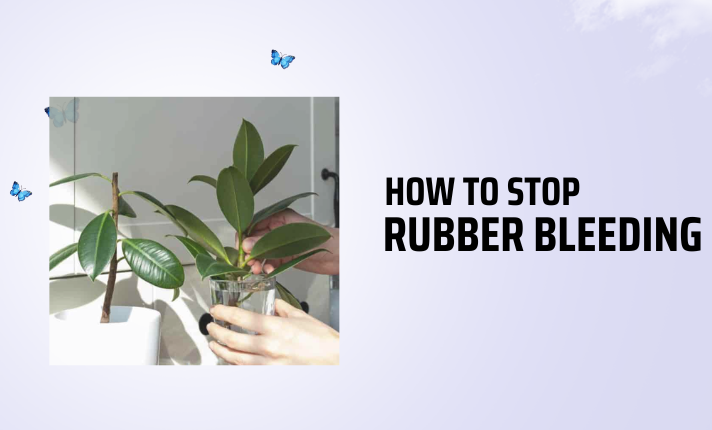How To Stop a Roof Leak in the Rain

Dealing with a roof leak during a rainstorm can be stressful for any homeowner. Water dripping from the ceiling inside your home not only causes damage to your belongings but also indicates potential issues with your roof. Knowing how to stop a roof leak in the rain is crucial to prevent further damage and maintain the integrity of your home.
There are several ways to address a leaking roof temporarily until you can fully repair it. Factors such as the shape of your roof, environmental conditions, and roofing knowledge play a role in determining the best approach. By following these tips and understanding the process, you can effectively manage a leaky roof during rainy weather.
FIND THE SOURCE Stop a Roof Leak in the Rain
To effectively stop a roof leak in the rain, you must first identify the source of the problem. Inspect your ceiling for any signs of water leaking, such as stains or bulging areas. Look for potential sources of leaks, such as clogged gutters, damaged tiles, or misaligned roofing materials.
Leaks can also be caused by your home’s plumbing or heating and cooling units. By addressing these issues promptly, you can save money on costly repairs and prevent further damage to your property.
Lack of proper maintenance can lead to pest infestation and mold growth in areas affected by leaks. Use tools like a flashlight and a ladder to thoroughly examine your roof for any visible signs of damage.
CLEAR THE AREA before attempting any repairs
It’s a good idea to clear the area around the leak before attempting any repairs to prevent further damage. Remove any furniture, appliances, or belongings from the affected area to avoid water damage. Place pails or suction hoses to collect any water leaking from the roof.
Use floor covers to protect your flooring from water damage. By clearing the area, you can ensure your home remains safe and minimize the leak’s impact on your belongings. Remember to keep safety in mind while working around a leaking roof to prevent accidents and injuries.
APPLY ROOFING TAR patches
One way to stop a roof leak in the rain is to use roofing tar patches on damaged areas of your roof. Apply roofing tar inside and outside your home to seal any leaks in the roof tiles. Shape the roofing tar patches to fit the leak area on your ceiling. Support the material with a shingle or plywood to ensure a secure seal.
Using roofing tar, you can effectively stop water from seeping into your home during rainy weather. Be sure to apply enough roofing tar to cover the entire affected area and prevent further leaks. Roofing tar is a cost-effective way to address minor leaks before they cause significant damage to your property.
Use PE Plastic To Stop Roof Leakage
If you have small leaks in your roof, using PE plastic, also known as polyethylene plastic, can be a simple and effective solution. This versatile material can be used to cover the source of the leaks and prevent water from entering your home. Start by measuring the space you need to cover with a ruler, then cut the PE plastic to size.
Once you have your PE plastic cut to fit the area of the leaks, secure it in place with staples or nails. Make sure the plastic is tightly fastened to create a watertight seal. You can use this method in multiple rooms where leaks are present, ensuring that water does not continue to seep into your home.
Install New Shingles
If your shingles’ condition contributes to a roof leak, consider installing new shingles to address the issue. Inspect your roof for any shingles that may be curled, bruised, or missing pieces. These damaged shingles can allow water to seep into your home during rainy weather. To safely replace the damaged shingles, use gloves and boots for protection.
Follow safety protocols and use a ladder to access the area where the shingles must be replaced. Use a nail removal hook to carefully lift and remove the old nails from the damaged shingle. Apply roofing tar underneath the new shingle before securing it with nails. This will provide an added layer of protection against leaks. By taking the time to fix the damaged shingles on your roof, you can shield your home from potential water damage during rainstorms. Remember to prioritize safety while working on your roof to prevent accidents and cuts.
Use Tarpaulins
One method to fix a roof leak during a storm is to use tarps. Measure the size of the areas where leaks are present and cut the tarp to fit. Use several tarps to cover all the spots where leaks occur. Anchor the tarp in place with concrete blocks or nails to ensure it stays secure during storms.
Tarps, which can provide temporary protection for your roof during winds or heavy rain, are held tightly by tarpaulins to prevent water from seeping through. This method allows you to dress leaks and protect your home from water damage until permanent repairs can be made. Monitor the tarp during storms to ensure it remains in place and continues to shield your roof from the elements.
Seal Joints To Stop the Roof Leak
One effective way is to seal joints and gaps with the appropriate materials. Rainwater can easily find its way into your home through small openings, so it’s essential to seal off these areas. Grab some chalk and aluminum flashing to cover the joints around chimneys and valleys where leaks often occur.
Use roof sealant or cement to fill in any cracks or gaps in the flashing or other areas of your roof that may be causing issues. Investing a little time and money now to properly seal these areas can save you from costly water damage repairs in the future. Make sure you have the right tools on hand to effectively apply the sealant and address any potential
TEMPORARY SOLUTIONS To Stop Roof leakage
Suppose you’re unable to repair the leak immediately. In that case, there are temporary solutions you can use to stop the flow of rainwater into your home. Place tarps over the affected area to prevent further leaks and protect your belongings. Use buckets or towels to catch any water dripping from the ceiling.
These temporary measures can help minimize damage until you can fully address the issue with your roof. Remember that these solutions are only temporary fixes and should not replace proper repairs to your leaking roof. Be sure to schedule a professional inspection and repair as soon as possible to prevent the problem from worsening.
PERMANENT Solutions Stop a Roof Leak in the Rain
To permanently stop a roof leak in the rain, hiring a skilled professional contractor with the tools and materials needed to address the issue effectively is essential. Professional repairs will ensure that your roof is fixed correctly and prevent future leaks. A skilled contractor will have the knowledge and experience to identify the underlying cause of the leak and provide a long-lasting solution.
Refrain from tackling a complex roof leak alone, as this can lead to further damage and costly repairs. Invest in professional services to protect your home from future water damage. By working with a skilled contractor, you can have peace of mind knowing that your roof leak has been permanently fixed with quality repairs.
Stop Your Roof Leak
You’ve discovered a pesky roof leak in your home during a rainstorm. Don’t worry; there are ways to stop it before it causes more damage to the interior of your rooms. One option is to cover the affected area with a tarpaulin or seal joints and gaps using roof sealant. These are just a few tips to help you address the issue quickly and effectively.
Taking action right away is vital when stopping a roof leak. By addressing the problem promptly, you can prevent further water damage to your home. Consider fusion whether the use of your roof is contributing to the leak.






